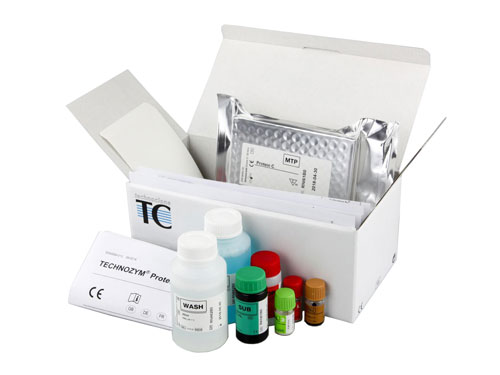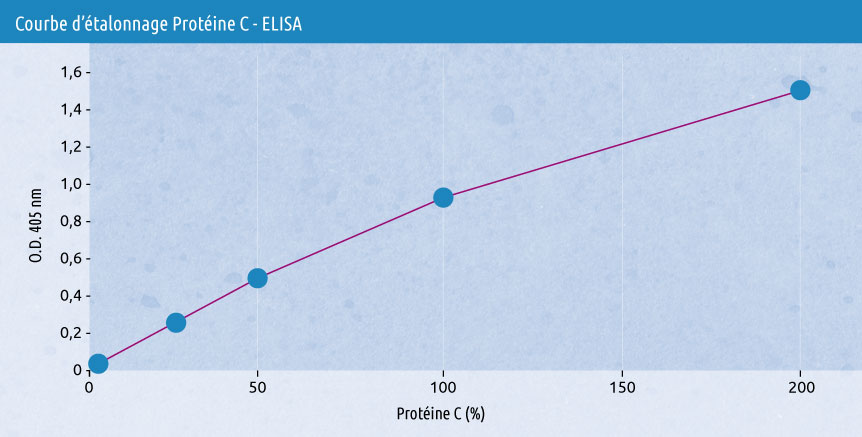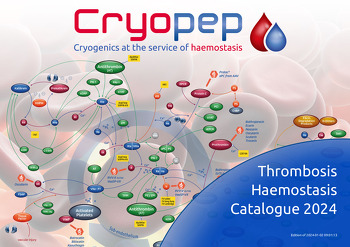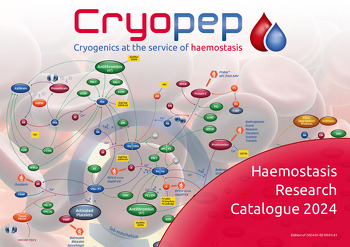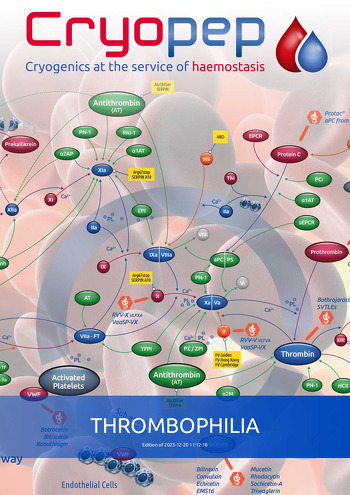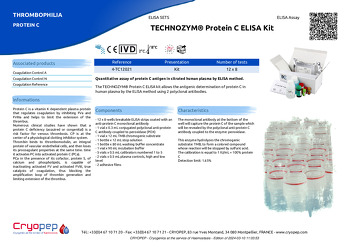Protein C is a vitamin K dependent plasma protein that regulates coagulation by inhibiting FVa and FVIIIa and helps to limit the extension of the thrombus.
Numerous clinical studies have shown that a protein C deficiency (acquired or congenital) is a risk factor for venous thrombosis. CP is at the center of a physiological clotting inhibitor system.
Thrombin binds to thrombomodulin, an integral protein of vascular endothelial cells, and then loses its procoagulant properties at the same time. time it activates PC into activated protein C (PCa).
PCa in the presence of its cofactor, protein S, of calcium and phospholipids, is capable of inactivating activated FV and activated FVIII, true catalysts of coagulation, thus blocking the amplification loop of thrombin generation and limiting extension of the thrombus.
The monoclonal antibody at the bottom of the well will capture the protein C of the sample which will be revealed by the polyclonal anti-protein C antibody coupled to the enzyme: peroxidase.
This enzyme hydrolyzes the chromogenic substrate: TMB, to form a colored compound whose reaction will be stopped by sulfuric acid.
The calibration is equal to 1 IU/mL = 100% protein C
Detection limit: 1.65%
- 12 x 8-wells breakable ELISA strips coated with an anti-protein C monoclonal antibody
- 1 vial x 0.3 mL conjugated polyclonal anti-protein C antibody coupled to peroxidase (POX)
- 1 vial x 12 mL TMB chromogenic substrate
- 1 bottle x 12 mL stop solution
- 1 bottle x 80 mL washing buffer concentrate
- 1 vial x 90 mL incubation buffer
- 5 vials x 0.5 mL calibrators numbered 1 to 5
- 2 vials x 0.5 mL plasma controls, high and low level
- 2 adhesive films






